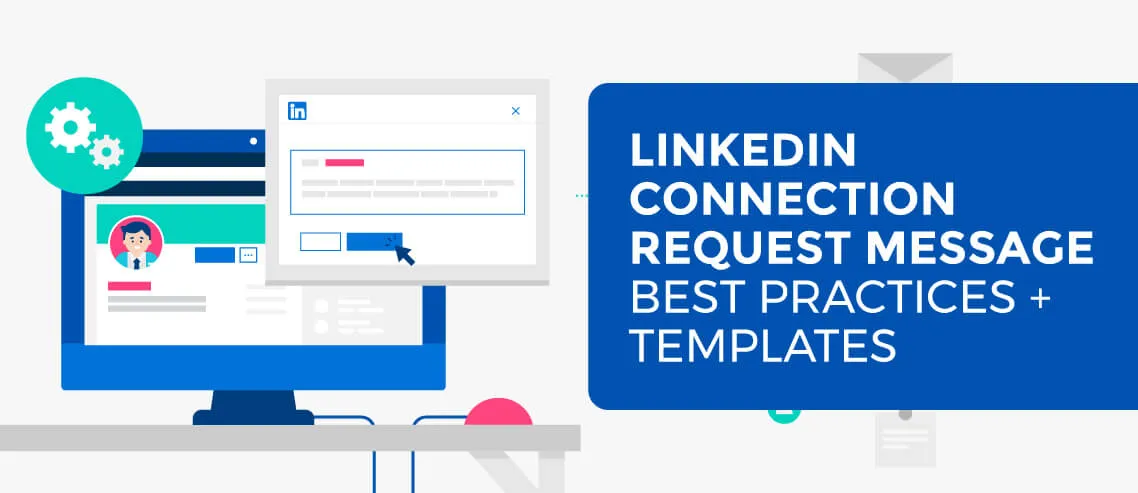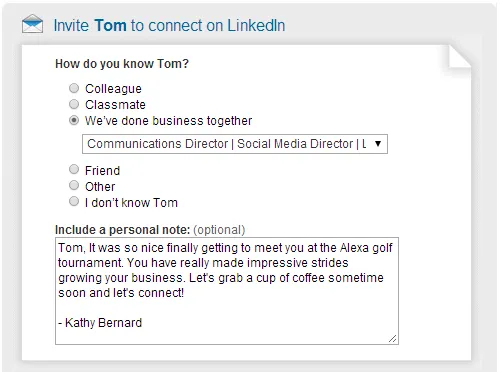In today’s digital age, networking has transcended traditional boundaries, and LinkedIn has emerged as a powerhouse in professional connections. Crafting the perfect LinkedIn invitation can make a significant difference in expanding your network. This post will guide you through the nuances of connection requests on
Understanding the Importance of LinkedIn Connections

When it comes to professional networking, LinkedIn connections are more than just numbers; they represent potential collaborations, mentorships, and career advancements. Here are a few reasons why building a robust LinkedIn network is crucial:
- Access to Opportunities: Many jobs are filled through referrals and connections. The more connections you have, the greater your chances of discovering job openings or being recommended for a position.
- Industry Insights: Connecting with industry leaders and peers allows you to gain insights into market trends, best practices, and various career paths. This knowledge can be invaluable for your professional growth.
- Building Credibility: Having a substantial network can enhance your professional credibility. When others see that you are connected with respected individuals, they are more likely to view you as an authority in your field.
- Support and Guidance: A diverse network can provide support in challenging times. Whether you're seeking advice on a project or navigating workplace dynamics, your connections can offer valuable perspectives.
To illustrate the significance of connections, consider the following table that highlights the potential benefits of a connected network:
| Connection Type | Potential Benefit |
|---|---|
| Colleagues | Collaboration on projects, referrals |
| Industry Leaders | Mentorship, guidance, insights |
| Alumni | Networking opportunities, shared experiences |
| Clients | Business opportunities, feedback |
In essence, every connection you make on LinkedIn can be a stepping stone toward achieving your professional goals. So, let’s dive deeper into how you can effectively approach and enhance your connection requests!
Also Read This: Local Gems: Using Spotify to Discover Underground Music Scenes
Preparing to Send Connection Requests

Before you hit that "Connect" button on LinkedIn, it's essential to prepare yourself for a successful outreach. Think of this step as laying down the groundwork for a fruitful connection. Here are some key points to consider:
- Identify Your Purpose: Ask yourself why you want to connect with this person. Is it for networking, seeking advice, or exploring job opportunities? Having clarity will guide your approach.
- Research the Person: Prior to sending a request, take a moment to check out the individual’s profile. Look for common interests, mutual connections, or shared experiences. This can provide valuable insight into how to tailor your message.
- Check Your Profile: Ensure your own LinkedIn profile is polished and professional. A complete profile with a professional photo, relevant experience, and a compelling summary can significantly increase your chances of being accepted.
- Be Mindful of Timing: Consider the timing of your connection request. For instance, sending a request following an event where you both attended can be more effective.
Remember, preparation is key. It sets the tone for your future interactions and can help you establish a meaningful relationship right from the start.
Also Read This: When Do Royal Rumble 2025 Tickets Go on Sale
Crafting a Personalized Invitation Message
Crafting a personalized message is where the magic happens! A generic message can make your request feel like spam, while a thoughtful note can spark interest and connection. Here’s how to create an engaging invitation:
- Start with a Friendly Greeting: A simple “Hi [Name]” is a great way to start. It sets a friendly tone right off the bat.
- Introduce Yourself: Briefly state who you are and what you do. For instance, “I’m a digital marketing specialist passionate about helping brands grow online.”
- Reference Common Ground: Mention any mutual connections, groups, or interests you share. This establishes familiarity and trust.
- State Your Intention: Be clear about why you're reaching out. For example, “I’d love to connect to exchange insights on social media strategies.”
- Keep It Concise: Aim for a few sentences that get straight to the point. A well-crafted, concise message is more likely to be read and appreciated.
Here’s an example of a personalized invitation message:
Hi [Name], I noticed we both attended the Digital Marketing Summit last week! I’m a digital marketing specialist and would love to connect to share insights and strategies.
By taking the time to craft a personalized message, you increase your chances of making a positive impression and building a valuable network.
Also Read This: How to Create a Small Robot at Home with This Easy DIY Tutorial
Choosing the Right Time to Send Requests
Timing can significantly impact the success of your LinkedIn connection requests. Think about when your potential connections are most active on the platform. Here are some key points to consider:
- Weekdays vs. Weekends: Generally, weekdays are preferable. Mondays and Tuesdays are often the best days, as people are fresh and more likely to engage.
- Business Hours: Sending requests during standard business hours (9 AM to 5 PM) can increase the likelihood of your request being noticed and accepted.
- Industry-Specific Timing: If you're connecting with professionals in specific industries, consider their work patterns. For instance, if you're in tech, late afternoons might be more effective as people wrap up their day.
- Event-Driven Requests: If you’ve recently met someone at a conference or webinar, send your connection request within 24 hours while the interaction is still fresh in their mind.
By paying attention to these timing strategies, you can enhance your chances of making meaningful connections. Remember, it’s all about being considerate of your recipient’s schedule!
Also Read This: How to Delete from LinkedIn
Best Practices for Sending Connection Requests
When it comes to sending connection requests on LinkedIn, a little thoughtfulness can go a long way. Here are some best practices that can help you stand out:
- Personalize Your Message: Always include a brief, personalized note. Mention how you know the person or why you want to connect. For example, "Hi [Name], I enjoyed your insights on [topic] during [event]. I’d love to connect!"
- Keep It Short and Sweet: Your note should be concise—ideally, no more than 300 characters. Get to the point while being friendly.
- Avoid Generic Requests: Steer clear of the default connection request message. It can come off as impersonal and might be ignored.
- Highlight Mutual Connections: If you have mutual connections, mention them! This can establish trust and increase acceptance rates.
- Be Professional: Maintain a professional tone. Use proper language and avoid slang to make a good impression.
By following these best practices, you’ll not only increase your chances of getting accepted but also lay the foundation for a meaningful professional relationship.
Also Read This: How Many Gigabytes Does YouTube Use
7. Following Up on Connection Requests
Following up on your LinkedIn connection requests can be a game-changer in expanding your professional network. Here’s why it matters: sometimes, your connection request might get lost in the sea of notifications, or the recipient may have simply forgotten to respond. A gentle nudge can help rekindle their interest in connecting!
Here are some thoughtful ways to follow up:
- Timing is Key: Wait about a week after sending the initial request. This gives the recipient enough time to review their notifications without feeling pressured.
- Personal Message: Send a brief message on why you’d like to connect. For example, "Hi [Name], I hope you're well! I reached out last week and would love to connect. I'm really interested in your work in [specific field].” This personal touch can make a difference.
- Engage with Their Content: If they’ve posted content in the meantime, comment thoughtfully on it. This shows genuine interest and can increase your visibility.
- Be Respectful: If they don’t respond after your follow-up, don’t take it personally. Not everyone is open to connections or might be swamped with requests.
Remember, your goal is to build relationships, and sometimes that requires a little persistence. Following up can demonstrate your commitment to connecting and can lead to fruitful professional relationships!
8. Conclusion
Mastering LinkedIn invitations is not just about sending requests; it's about building meaningful connections. Through thoughtful engagement and genuine interaction, you can elevate your networking game. Here are some key takeaways:
- Personalize Your Requests: Always customize your invitations to reflect a genuine interest in the other person.
- Be Mindful of Timing: Sending connection requests at the right moment can increase your chances of acceptance.
- Follow Up Wisely: A well-timed follow-up can spark interest and remind the recipient of your initial request.
- Build Relationships: Focus on nurturing your connections rather than merely accumulating numbers. Quality over quantity!
In the end, LinkedIn is an incredible platform for professional growth. By mastering how to send effective invitations and strategically following up, you can pave the way for collaborations, mentorships, and countless opportunities. Happy networking!